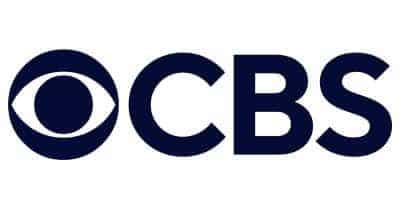
Lock in today's best 3 year fixed annuity rates, defer taxes, and buy your annuity at home — all through one independent platform.
*Illustrative snapshot. Click below for live updates & full comparison including carrier strength, liquidity, and renewal options.
View Full ComparisonRates subject to change without notice. Availability & features vary by state and insurer. Guarantees are backed by the claims‑paying ability of the issuing insurance company. Not a bank product. Not FDIC insured. State guaranty association limits apply (vary by state).
3 year fixed annuity rates are guaranteed for the entire length of the contract term. Fixed annuities are often referred to as “CD-type” annuities because of their similarities to a certificate of deposit. Annuity rates are issued by an insurance company rather than the bank, and the issuing insurance company sets its own annuity rates.
| Insurer | Annuity Product | AM Best Rating |
Rate (Fixed) |
Free Withdrawal Yr 1 | Yr 2+ |
Action |
|---|---|---|---|---|---|
| Mountain Life | Alpine Horizon 3 | B+ | 6.00% | 0% | 5% | Apply |
| Wichita National | Security MYGA 3 | B | 5.85% | 0% | 0% | Apply |
| Knighthead Life | Staysail 3 (simple interest) | A- | 5.75% | 0% | 0% | Apply |
| Wichita National | Security MYGA 3 | B | 5.70% | 10% | 10% | Apply |
| Axonic | Waypoint MYGA 3 | A- | 5.55% | 0% | 10% | Apply |
| Revol One | DirectGrowth 3 | B++ | 5.55% | 0% | 0% | Apply |
3-year fixed annuities, or multi-year guaranteed annuities (MYGA), pay a specified rate for 3 years. Insurance companies issue annuities, and product features vary by insurance company and from product to product. Many fixed annuities allow you to take free withdrawals of your interest or up to 10% of your annuity’s account value each year.
Most annuities earn interest daily and credit the interest to the annuity account value each month. More than 90% of all fixed annuities use compound interest, which means you earn interest on top of your interest. However, recently, a handful of annuity companies have begun to offer fixed annuities that credit using simple interest.
Annuities that use simple interest only pay interest on your original deposit and not on the interest you earn; these types of annuities are best for someone who plans to withdraw their interest each month (compounding doesn’t matter in this case).
Not all fixed annuities offer the same liquidity or free-withdrawal provisions, so it is important to look closely at these features when comparing annuities. Each annuity will offer one of these three options:
You also want to consider when the free withdrawals become available. Some annuities make free withdrawals available in year one, while other products don’t allow for any withdrawals until year 2.
A surrender charge is applied to any withdrawal during the 3 year annuity contract that is not allowed by a free withdrawal provision (i.e., interest only, 10% free). Surrender charges in annuities tend to be fairly steep, so it is very important to consider your liquidity needs before purchasing an annuity.
A typical surrender charge schedule is 8% in Year 1, 7% in Year. 2, and 6% in Year 3.
At the end of the 3 year contract, you can renew for another 3 years, transfer your annuity to another insurance company using a tax-free 1035 exchange, or take possession of all of your funds without penalty.

An MVA adjusts the value of an early withdrawal based on changes in a specific interest rate index. If interest rates have risen since the annuity was purchased, the MVA will likely be a negative adjustment, decreasing your payout; if rates have fallen, it will be positive, increasing it.
The MVA is typically only applied to withdrawals that exceed any penalty-free limits or to the entire contract if surrendered before the end of a surrender period.
10% free withdrawals are a fairly common feature among 3 year fixed annuities, although they are more common in longer-term annuity contracts. The way it works is you are allowed to withdraw up to 10% of your previous year’s account value. You are allowed to take the 10% free withdrawal once per annuity contract year.
The “59½ rule” is an IRS guideline that states you can begin taking withdrawals from qualified retirement plans without incurring the standard 10% early withdrawal penalty once you reach age 59½. This applies to accounts like 401(k)s, 403(b)s, and traditional IRAs.


Disclosures: Guarantees are backed by the issuing insurer’s financial strength and claims-paying ability. CDs are FDIC insured up to limits. Bonds are subject to interest rate and credit risk. This is educational, not individualized advice.

Questions or current top rates? Call 855‑583‑1104 or email info@myannuitystore.com. We’ll keep it simple and put your goals first.
We regularly update this page and cite primary sources, carrier filings, and regulator guidance:
Transferring an annuity to a trust is a strategic move in estate planning. It involves shifting ownership of an annuity to a trust. This
Annuity sales keep breaking records. Sales thru the end of Q3 2025 hit $119.3B, up 4% year-over-year—the eighth straight quarter over $100B. Year-to-date sales
Understanding the Significance of Annuity Dates Annuity dates play a crucial role in financial planning. They determine when you start receiving income from your
What Is a Surrender Charge? Annuity Surrender Charge Explained An annuity surrender charge is a fee the insurer may assess if you withdraw funds
Answer a handful of questions below and we will guide you to the type of annuity that best matches your goals and objectives. Our






Tip: Check spam/promotions if you don’t see our email on time.
Need help sooner or have a quick question?
What happens next
Tip: Check your spam or promotions folder if you don’t see our email within the time window.